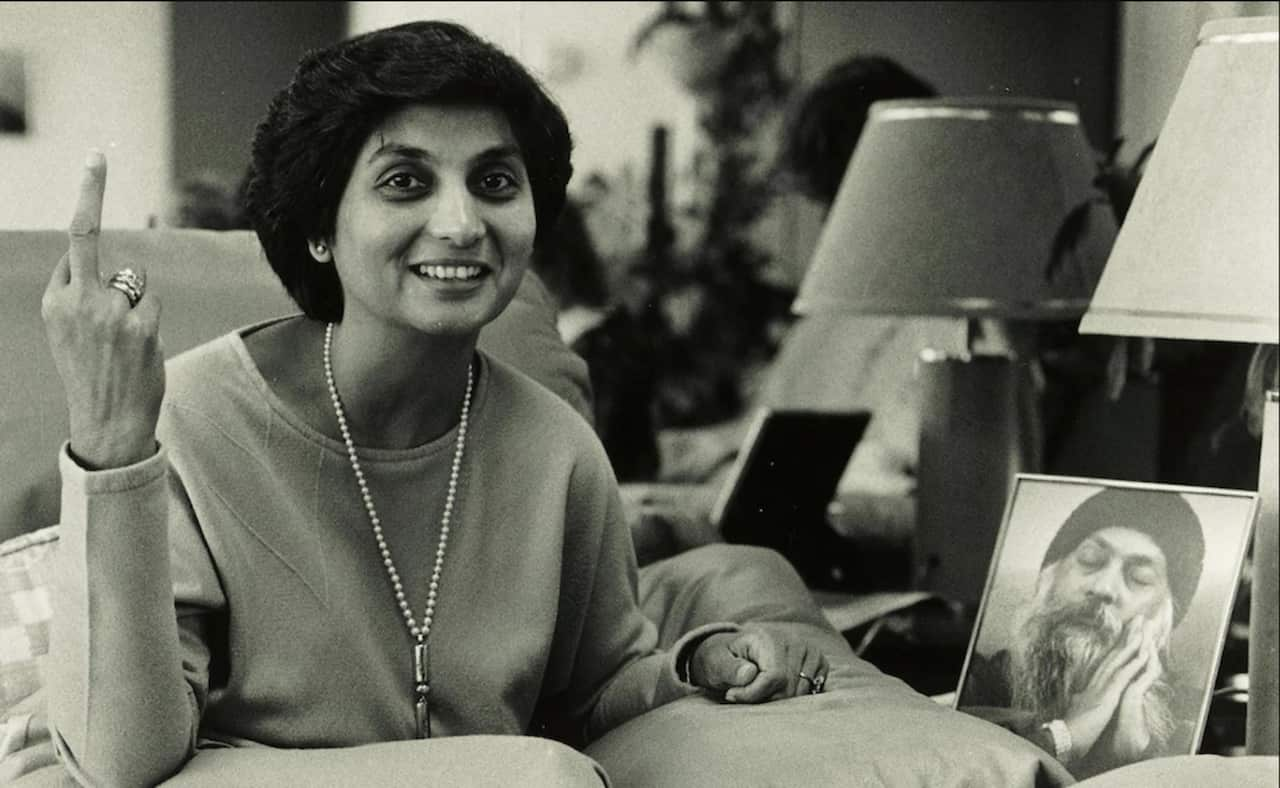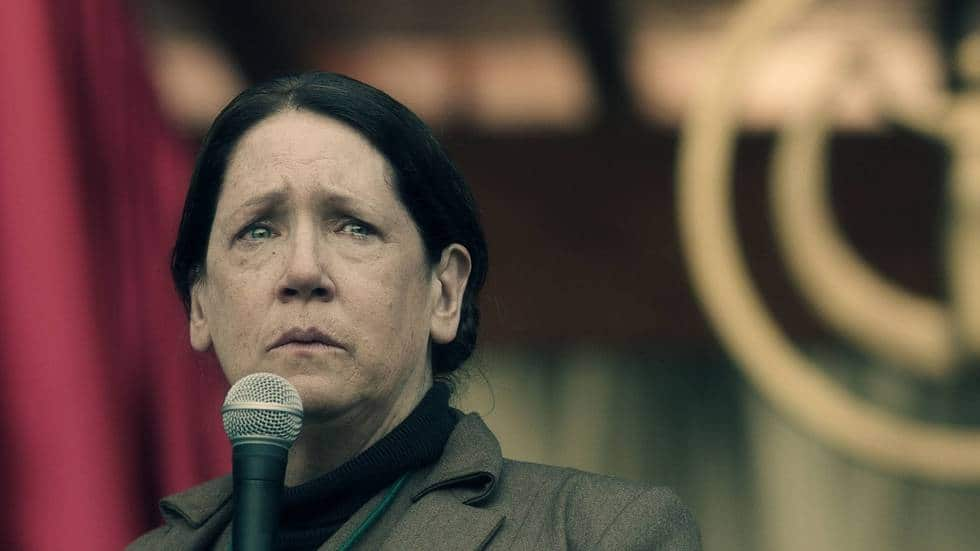If you don’t believe that the truth can be stranger than fiction, then you haven’t seen Wild Wild Country. The Netflix docuseries, which follows the Rajneeshees, the acolytes of the Bhagwan, a sketchy Indian guru who lured thousands of rich, middle-class followers away from the trappings of bourgeois existence with sexual liberation and free-flowing beer, is a study in outlandish moments.
There’s a commune in the Oregon desert. There’s the biggest bioterrorist attack in US history. And then there’s the Bhagwan’s secretary Ma Anand Sheela, the diminutive mastermind who’s maybe the only woman of colour to strike fear into the hearts of Western civilisation by spitting zingy one-liners like “Tough titties” on national television wearing a fetching lilac blouse and matching pants. Sheela, who pledges her devotion to the Bhagwan as a 16-year-old, rallies the Rajneeshees to build a city, orchestrates a murder plot and, once, summons a former Perth mother called Shanti B to her room to perform a late-night leg wax. Yes, she’s arrogant, hungry for power and devoid of anything resembling a moral compass. But in a world that still demands that women of colour be permissive and likeable there’s something radical about the way she (literally) gives that system the middle finger before blowing it up from within.
Sheela, who pledges her devotion to the Bhagwan as a 16-year-old, rallies the Rajneeshees to build a city, orchestrates a murder plot and, once, summons a former Perth mother called Shanti B to her room to perform a late-night leg wax. Yes, she’s arrogant, hungry for power and devoid of anything resembling a moral compass. But in a world that still demands that women of colour be permissive and likeable there’s something radical about the way she (literally) gives that system the middle finger before blowing it up from within.

Ma Anand Sheela. Source: Netflix
Pop culture loves a good anti-hero. These troubled figures which as Hope Reese points out in a 2013 article in The Atlantic, coincide with the rise of prestige HBO dramas, are an antidote to the wholesome protagonists that thrived in the ‘70s and ‘80s. They’re also almost always straight, male and white.
Who could forget The Soprano’s Tony Soprano, the New Jersey gambler who strangles a man over a racehorse? Walter White, Breaking Bad’s chemistry teacher turned meth dealer? Or Mad Men’s Don Draper, the creative director who turns lying and cheating into high art?
The existence of male anti-heroes isn’t a new phenomenon. It’s not even exclusive to television. Men have been allowed to play out their moral complexity, with little consequence, since the early Ancient Greek epics . Women, historically lumped with Imposter Syndrome and written to service great men’s character arcs, not so much.
But as Rebecca Nicholson writes in a July 2018 article in The Guardian, the tide may be starting to turn. Ma Anand Sheela, who is now a kindly owner of a nursing home in Switzerland, is only the latest in a series of on-screen women who are complicated and transgressive, as likely to be corrupted by power as their male counterparts. On The Handmaid’s Tale, Aunt Lydia excels as a handmaiden of the patriarchy, forcing women to endure vicious impregnation “ceremonies” with the help of an electric cattle prod. Dory Shief, the twentysomething protagonist of Search Party, attempts to find a missing girl to inject her life with meaning but also throws her unstable neighbour off a ferry. And Anna Delvey, a German-Russian socialite who scammed New York’s cultural elite into paying all her hotel bills has sparked a new fascination with female con artists. It’s the basis of a new series by Shonda Rhimes.
On The Handmaid’s Tale, Aunt Lydia excels as a handmaiden of the patriarchy, forcing women to endure vicious impregnation “ceremonies” with the help of an electric cattle prod. Dory Shief, the twentysomething protagonist of Search Party, attempts to find a missing girl to inject her life with meaning but also throws her unstable neighbour off a ferry. And Anna Delvey, a German-Russian socialite who scammed New York’s cultural elite into paying all her hotel bills has sparked a new fascination with female con artists. It’s the basis of a new series by Shonda Rhimes.

Aunt Lydia from the Handmaid's Tale. Source: Supplied
Although this new wave of female anti-heroes hints that the culture might be finally catching up with the notion that women are human, there’s also something else at work. In his 2013 book Difficult Men, Brett Martin argues that the rise of male anti-heroes was a consequence of a post-9/11 world defined by the Global Financial Crisis and the failure of traditional masculinity.
We can also read the new wave of female antiheroes as the symptom of a new, more extreme era. It’s a moment during which movements such as #MeToo are exposing the patriarchy and giving weight to women’s stories. But it’s also one in which more white women voted for Trump than any other demographic, corporate feminism continues to fail women of colour and wellness, an ideal that looks, thin, white and suspiciously like Gwyneth Paltrow, is the new way to police how women look, feel and eat.
At the end of Wild, Wild Country, Sheela, heartbroken that the Bhagwan rejected her, flies away from the commune in a private plane. You could see this as the move of a woman who’s tired of living a man’s vision. Or you could read it as the action of an anti-hero who’s learned that sometimes the best you can do when you’re faced with a bunch of bad options is seize the power you do have — and run.
Share



